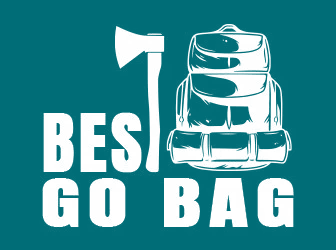As it almost always is, March was a weather roller coaster in many parts of the country.
Cold, windy and snowy one day, but warm, calm and sunny the next. Heavy rains and even tornadoes in some parts of the nation, yet beautiful blue skies elsewhere.
It’s not difficult to predict weather patterns in the U.S. for March. Just pick every condition possible and you’re bound to be right.
April weather forecasting presents more challenges. But the recent La Niña weather pattern in the Pacific Ocean gives meteorologists confidence that we could be looking at a crazy spring. And we all know what that means – power outages.
A Chilly, Wet Spring?
February brought record-breaking Arctic air to many parts of the South. Including Texas. Blackouts left people and animals freezing. Sometimes to the point of death.
Many weather prognosticators are calling for chilly temperatures for the first part of spring as well. And plenty of precipitation and the potential for flooding.
Severe storms including tornadoes are likely to occur. First in the South and then later in the Plains and Midwest. Overall, tornado activity is expected to be up in 2021.
During a three-day span in mid-March, there were more than 200 reports of violent storms. Including tornadoes across the South. From Texas to Virginia and northern Florida.
Many of the 30-plus tornadoes were reported in Mississippi and Alabama. More than 40,000 homes and businesses lost power during the storms in those states and Louisiana.
Farmers’ Almanac Predicts…
What does the Farmers’ Almanac have to say about spring weather in the U.S. in 2021?
They’re saying it will take longer than normal for temperatures to warm up in the northern half of the country. Except for New England.
Other than dry and balmy conditions in the Northwest, the Almanac calls for wet weather just about everywhere else.
According to Accuweather, “La Niña is projected to continue throughout the spring before weakening heading into early summer. The effects in the U.S. from La Niña could create a volatile situation with an active severe weather season.”
La Niña Cause for Concern
The La Niña weather pattern includes cool waters in the tropical Pacific. Which can lead to tornado formations.
That’s why meteorologists predict a potent tornado season this spring for the third year in a row.
Hopefully we can avoid a repeat of the 2011 Super Outbreak when over 700 tornadoes were recorded. It was called “one of the largest meteorological disasters in U.S. history.”
“La Niña tends to increase the likelihood of us seeing tornadoes and severe weather across the continental United States.” So says John Allen. He’s a weather expert and professor at Central Michigan University.
The ‘H’ Word? Already?
Normally we don’t start discussing the “H” word until May. That’s because hurricane season does not officially begin until June 1.
But meteorologists are already talking about it, so I thought I’d better as well. Why the early mentions of hurricanes?
Because the National Hurricane Center recently made this announcement. The National Oceanic and Atmospheric Administration is considering moving the Atlantic hurricane season start day. From June 1 to May 15 for future seasons.
That still leaves us with the “why” question. The reason is not mysterious. For the past six years, named storms have been forming prior to the start of June.
Over the past nine Atlantic hurricane seasons, seven tropical storms have formed between May 15 and June 1. They’ve been responsible for 20 deaths. And approximately $200 million in damages.
Hurricane Season Could Be Extended
These storms that form before the traditional hurricane season begins are usually brief, hybrid subtropical systems.
In fact, in 2020, the National Hurricane Center released 36 tropical weather outlooks prior to June 1.
The beginning of the official Atlantic hurricane season will not be changed for this year.
But the National Hurricane Center will now begin to issue weather outlooks for the Atlantic basin beginning May 15.
Running Out of Names
So, how does the official start of the Atlantic hurricane season affect our lives? Mainly, it’s a wake-up call for residents and businesses in hurricane-prone areas to start preparing earlier. It’s an awareness issue.
Is that really necessary? Data from recent years would say yes. During last year’s record-setting hurricane season, there were so many storms that the World Meteorological Organization ran through its list of 21 prepared names.
As in 2005 when this occurred last, they then moved to Greek letter names. Such as Zeta, Eta and Theta. But because those names sound so similar, they’re doing away with them for 2021.
If they run out of the 21 prepared names for storms this year, they have others waiting in the wings. Including Adria, Braylen, Caridad, Deshawn, etc. All the way through Will.
Generator to the Rescue
As I mentioned earlier, the common denominator when it comes to severe spring weather is power outages.
And the more extreme the weather, the longer it takes to restore power. Sometimes it’s days. Other times it can be weeks.
Are you prepared to deal with that type of scenario? You would be if you owned a solar-powered generator.
My recommendation is the Patriot Power Generator 1800. It can power up the things you need most in an emergency. Including lights, your refrigerator and freezer, medical devices, phones, and so much more.
Because it’s fume-free, it’s safe for indoor use. In fact, it’s SO quiet and safe, you could run it next to your bed while you sleep. Best of all? It charges with the free power of the sun. And it’s all available on an easy, monthly payment plan.
>> See this personal solar power system in action here [VIDEO]


